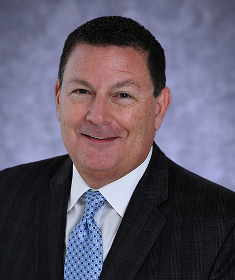Prosper or just survive?
Building resilience capability (Leadership insights series)

At the expense of sounding cliché, “Nothing is constant but . . .”
I will let you finish perhaps an overused phrase. But, ponder for a moment the true grit behind it.
All around us is change—challenging change, tumultuous change, hard change, and exhilarating change. How your organisation survives or thrives depends on what you tell yourself about change, how you deal with and refocus dispersed energy, and how you lead through it.
In this article, we are offering a three-step process for building resiliency skills so that individuals can see change as an opportunity to advance in today’s world—seeing change as a gain instead of a loss, something to react to, or “dealing with a disruption.”
The Role of Leaders in Building Resilience
At Wilson Learning, we see the role of leader as engaging others in committing their full energy to the creation of value and success for themselves and their organisation. We also recognise that how much energy employees contribute at work is their choice; the amount of energy they are willing to give over and above the minimum needed to keep their job is at their discretion. In times of change, their energy is at risk—and so is yours.
Leaders are often the first ones to hear about a change as organisations devise new strategic imperatives to respond to ever-increasing challenges. All strategy calls for implementation, and all implementation requires change. Change requires the best of those involved, including executives, managers, and employees. For the organisation to move forward, employees need to be resilient and leaders need to be resilient.
A Three-Step Process for Leading in Times of Change
Resilience is often described as durability + sustainability—the ability to recover from the disruption of change and then move forward confidently in a context of opportunity. The true key to effective organisational change is ensuring leadership is proactive by building the skill of resilience through a process to first manage change for themselves and then to influence, mentor, and support others as they move through change.
Building your and your employees’ resilience involves three critical steps:
1. Recognise and reconcile your own loss. Change is often perceived as a loss—a loss of status, friendships, identity, authority, tradition, purpose, etc. The moment change happens, energy disperses. The natural tendency is to immediately go inside and think about “what does this mean for me?” And, everyone’s self-talk responds to loss differently in what we call the Four Dis’s.
- Disorientation: “Where do I fit in?”
- Disenchantment: “Is it not awful?”
- Dis-identification: “I used to be somebody.”
- Disengagement: “I will just quit and stay.”
To be resilient, the first step is to recognise what’s happening, deal with your perceived loss, and resolve that in yourself. You then can make a choice to move forward in the context of opportunity, focusing your energy toward the creation of value and success.
2. Intervene to help others. Just as you felt a sense of loss by what you told yourself about this loss, so do your employees. As the change begins to be communicated, they too respond to loss and their “Dis” might be different than yours.
Employees may not tell you that they are struggling with the change. Our experience in training leaders to tune in to what employees are saying or doing equips them to help better manage energy dispersed by their employees’ perceptions of the disrupting situation. The key for leaders is to be proactive and recognise the clues employees are sending, intervene to help them recognise and reconcile their loss, and move at their pace, as we all move through change at varying speeds. Traditional change management is about a step-wise progression to push people through change. Resilience is proactively intervening to help others move through change at their pace for recognising perceived loss and choosing how they will commit their energy to the change.
| If loss is demonstrated by: | Leadership needs to: |
|---|---|
| Disorientation—“Where do I fit in?” | Reorient by clarifying direction, providing clear expectations and goals, defining roles, etc. |
| Disenchantment—“Is it not awful?” | Understand the reason for the anger (usually a form of loss), listen while the employees vent, focus on the cause, and try to help them through it |
| Dis-identification—“I used to be somebody.” | Help them identify with the future by creating a sense of opportunity in what is coming; describe how the employee is part of something important and why this is worth doing for the employee and the company |
| Disengagement—“I’ll just quit and stay.” | Ensure employees understand the connection between their own value contribution and the organisation’s ability to realise the future potential from the change |
3. Lead the change process. The problem with most reactive forms of change management is they deal with countering the negatives of change, countering the thoughts people have concerning whether they or the organisation will survive the change, or concerns over the losses.
Resilience is less about countering the old negative story and more about creating the new story, embedded in the context of realistic opportunity. It’s refocusing energy for yourself and your employees to realise “what’s our potential for growth, sustainability, or collaboration going forward?” It is not about what we lost in change but what we gain that needs to be told.
Building Organisational Resilience Capability
Building resilient employees may be the best empowering skill development initiative an organisation can do because when employees are stuck, the organisation becomes stuck.
Today, success is less about helping employees “get through” a change process and more about building change resilience so people can adapt to the continuous change that surrounds them. As we know, the only thing constant is change. In the light of that truth, build your organisational resilience capability and thrive.
To learn more, contact Wilson Learning Worldwide | Phone: +44.1494.678.121 | Email: info@wilsonlearning.co.uk








 Please complete this form to download Prosper or just survive? | Building resilience capability (Leadership insights series).
Please complete this form to download Prosper or just survive? | Building resilience capability (Leadership insights series).



